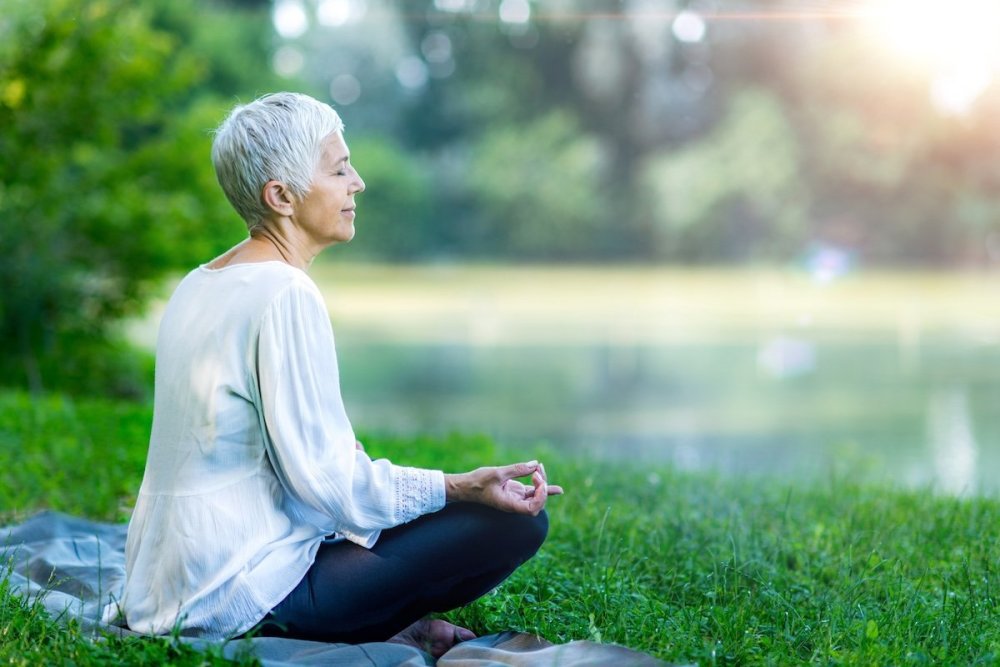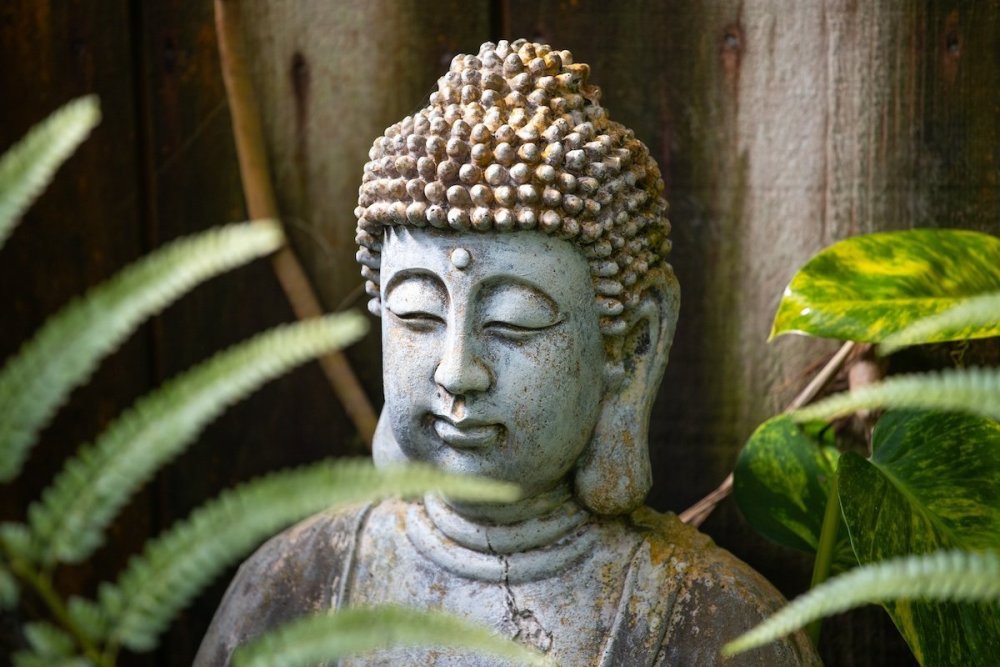There are many different types of Buddhism. Ann Vrlak explains the unique components of the main four Buddhist branches: Theravada, Mahayana, Vajrayana, and Chan/Zen.
You don’t need to wear a robe or shave your head to explore Buddhism. This worldwide religion is practiced by people who want tools to live more simply and mindfully, all the way to those who want to dive deep into a more spiritual lifestyle.
To take a quick look back, Buddhism was born over 2,500 years ago in the region now known as northern India. With the help of a vast web of trade routes, Buddhism spread across Asia, and eventually around the world. The Buddha’s teachings were influenced by the various cultures they came into contact with, to create many different forms of Buddhism.
These adaptations are both cultural and personal. For example, a culture might place high value on community. Or, someone might have a personal value of individual responsibility. The good news is, the branches of Buddhism now offer a doorway for everyone to enter.

Buddhism has multiple branches: which suits you best?
Let's take a look at the four most prominent types of Buddhism: Theravada, Mahayana, Vajrayana and Chan/Zen Buddhism.
1. Theravada Buddhism
If you’re drawn to learning about personal awakening and responsibility, Theravada is the branch of buddhism to begin with. It is the oldest surviving branch of Buddhism and the most traditional, practiced primarily in Southeast Asia: Thailand, Laos, Sri Lanka, Myanmar and Cambodia.
Theravada Buddhism has a structured, disciplined approach to spiritual growth. Building self-awareness is key – examining how the teachings are reflected in your unique life circumstances and challenges.
“If you’re drawn to learning about personal awakening and responsibility, Theravada buddhism is the place to begin. It is the oldest surviving branch of Buddhism.”
This school of Buddhism has a foundation of deep practice, always favouring direct experience over conceptual understanding. The ultimate goal is individual enlightenment: liberation from suffering.
Theravada Buddhism is grounded and practical, with insight and mindfulness meditation as the central practices. They are integrated into daily living, as well as long periods of meditation and contemplation. This intense practice is honourable, whether it’s done by those on the monastic path or everyday practitioners.
In a nutshell
Theravada offers a step-by-step, structured approach to personal awakening.
2. Mahayana Buddhism
The “Great Vehicle” is used to describe Mahayana Buddhism. Mahayana expanded from India, into China, Japan, Vietnam and Korea to become one of the most influential schools of Buddhism. While Theravada puts individual enlightenment at the centre of its philosophy and practice, Mahayana believes the goal is awakening for the sake of all beings. In fact, Mahayana sees individual enlightenment as a contradiction or misunderstanding.
To highlight that perspective, this type of Buddhism uses the core idea of the bodhisattva. This is someone who devotes themselves to practice not only for themselves, but for others. In fact, the selflessness of the bodhisattva is said to be so pure they “hold themselves back” from total enlightenment until all beings can join them.

Meditation is a key component of Theravada Buddhism
For Mahayana Buddhists, development of compassion is given equal importance to wisdom. True wisdom is not realized, unless it is interwoven with compassion.
So, Mahayana practice focuses more on a direct awakening of the heart. There is a wide range of practices and texts, based on the belief that there are many “skillful means” to open one’s heart. Practices include chanting, visualizations and devotions.
In a nutshell
If placing compassion at the centre of your spiritual life feels best to you, embracing the benefits to others, begin with the Mahayana branch of Buddhism.
3. Vajrayana Buddhism
Vajrayana Buddhism grew out of the Mahayana tradition and is its most elaborate form. If you have seen any of the Dalai Lama’s rituals or temples, you had a glimpse of the complex world of Vajrayana Buddhism: mandalas, sand paintings, deities, symbols and chanting. This “Diamond Vehicle” of Buddhism came to its most intricate expression in Tibet and the Himalayan Regions of Nepal and Northern India.
“Which type of Buddhism calls to you? Each has its own way to understand and engage with our human experience.”
It is these rituals and objects that differentiate Vajrayana Buddhism from other schools of Buddhism. These are much more than symbolic.They are intended to directly affect your mind and energy. Contemplating a mandala, for example, does not engage your thinking mind. It resonates with a deeper way of seeing life’s patterns.
RELATED: How to Cleanse Your Energy: 8 Ways to Remove Negative Vibes
This branch of Buddhism, more than others, is considered a serious commitment that depends on a relationship with a teacher.
In a nutshell
If you’d like to learn a casual meditation practice, one of the other types of Buddhism is best. Vajrayana Buddhism is for you if you want to dedicate yourself to consistent inner work with an established teacher.
4. Chan/Zen Buddhism
Now, we go to the other end of the complexity spectrum to Chan/Zen Buddhism. In both China (Chan Buddhism) and later in Japan (Zen Buddhism), practitioners wanted a stripped-down, essential spiritual philosophy and practice.
Chan/Zen Buddhism centres on ideas that might sound familiar to you: simplicity and mindfulness in everyday activities, and direct experience of the awakened view through disruptive practices. Let’s briefly look at these concepts, especially the latter. Mindfulness is core to Chan/Zen Buddhism
Mindfulness is core to Chan/Zen Buddhism
Chan/Zen encourages mindfulness and practices around every action you take; honouring everything, no matter how small. This idea is behind tea ceremonies and creation of rock gardens. When you do simple, mundane activities, with full attention and reverence, something rich shines through.
RELATED:
- Visualization Meditation: How to Practice it
- Do Buddhists Believe in God?
- What Goes Around Comes Around: is Karma Real?
Koans are one of Chan/Zen’s most infamous tools. These are paradoxical sayings that your mind can’t untangle, so not only does it become frustrated, but it temporarily “goes offline.” When your day-to-day mind lets go, a direct experience of reality breaks through.
In a nutshell
If using tools to bypass your usual way of thinking is exciting to you, try Chan/Zen koans. They are creative, surprising ways to wake up your mind. Chan/Zen Buddhism is also a powerful way to begin a practice that embraces mindfulness of everyday actions.
Takeaway: Types of Buddhism
Which branch of Buddhism calls to you? Each has its own way to understand and engage with our human experience. The four types of Buddhism we have talked about here offer a doorway in for people with different goals and personalities.
And, if you want to explore, there's no reason you can’t try all of them. See which buddhism type supports you best in areas you care about – and that might be different at different stages of your life. Curiosity is all you need to begin. ●
Images: shutterstock/Dilok Klaisataporn, shutterstock/Christophe Badouet, shutterstock/Microgen
happiness.com | The fine art of being: learn, practise, share
Are you a happiness.com member? Sign up for free now to:
■ enjoy our happiness magazine with practical life tips
■ share and support others in our happiness forum
Gratitude | Altruism | Acceptance | Ethics & Morals
Written by Ann Vrlak
 Ann Vrlak is Founder of OneSelf Meditation and a meditation practitioner for over 25 years. She’s a Certified Meditation Teacher for adults and for children (the best job ever!). She loves to share how the perspective and practice of meditation can support people with their everyday stresses and on their journey of self-discovery.
Ann Vrlak is Founder of OneSelf Meditation and a meditation practitioner for over 25 years. She’s a Certified Meditation Teacher for adults and for children (the best job ever!). She loves to share how the perspective and practice of meditation can support people with their everyday stresses and on their journey of self-discovery.



Join the conversation
You are posting as a guest. If you have an account, sign in now to post with your account.
There are no comments to display.